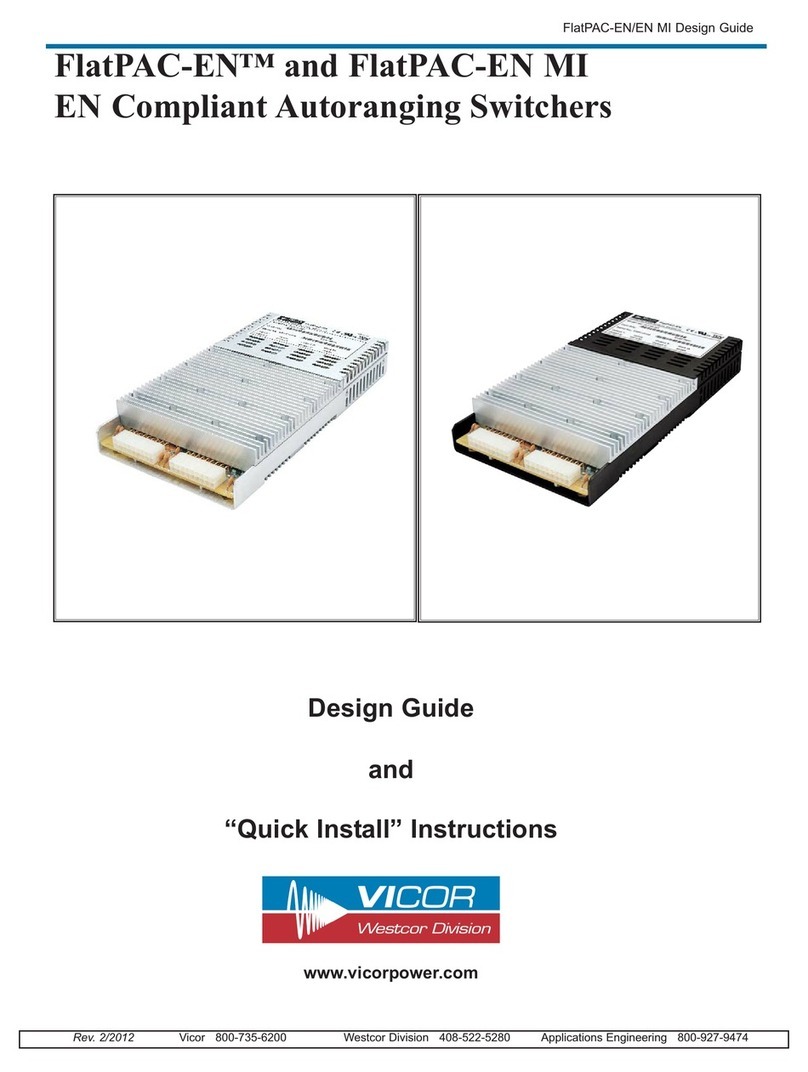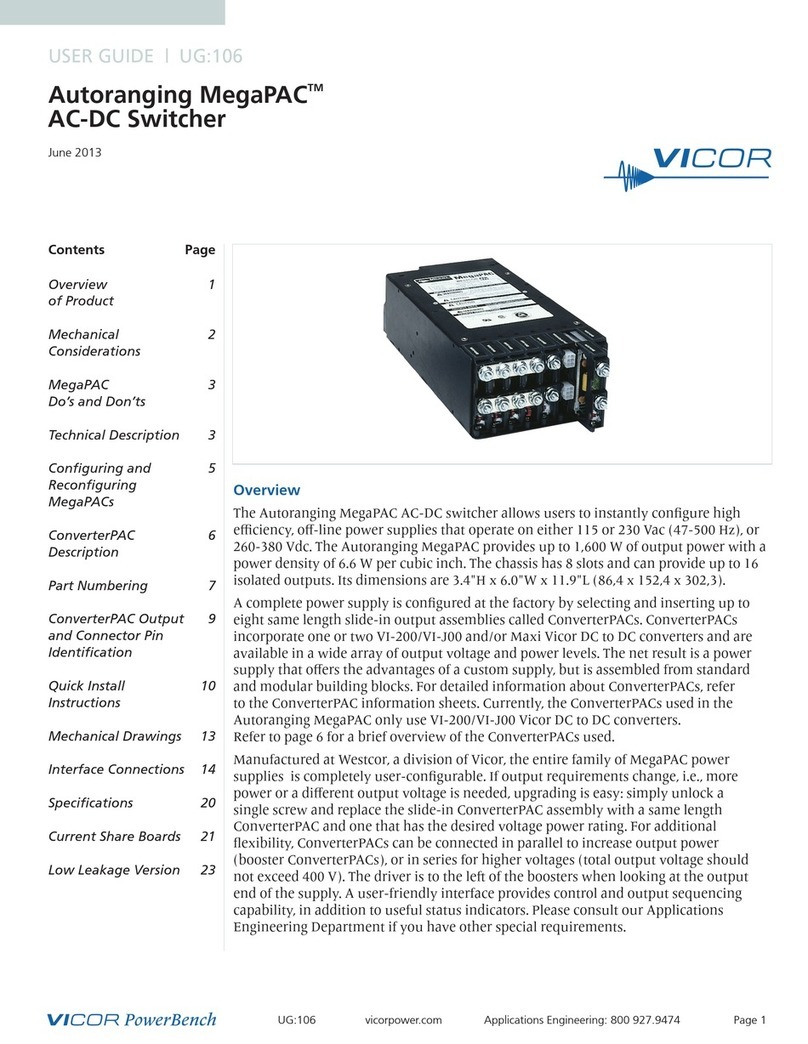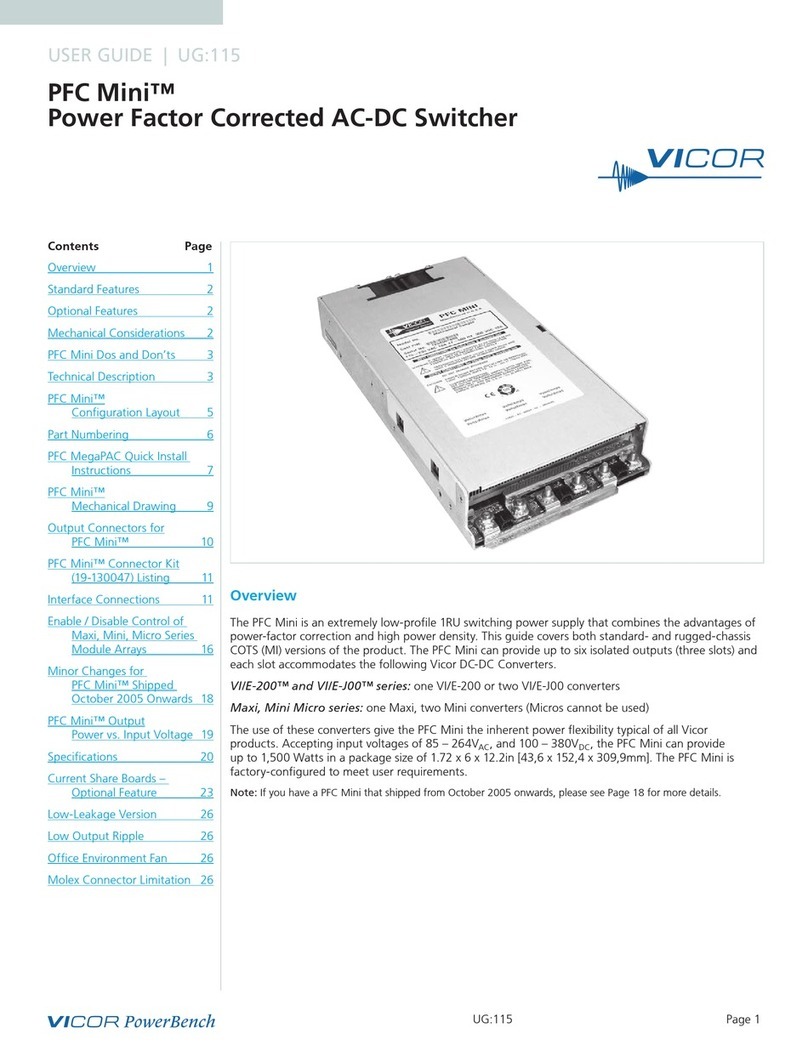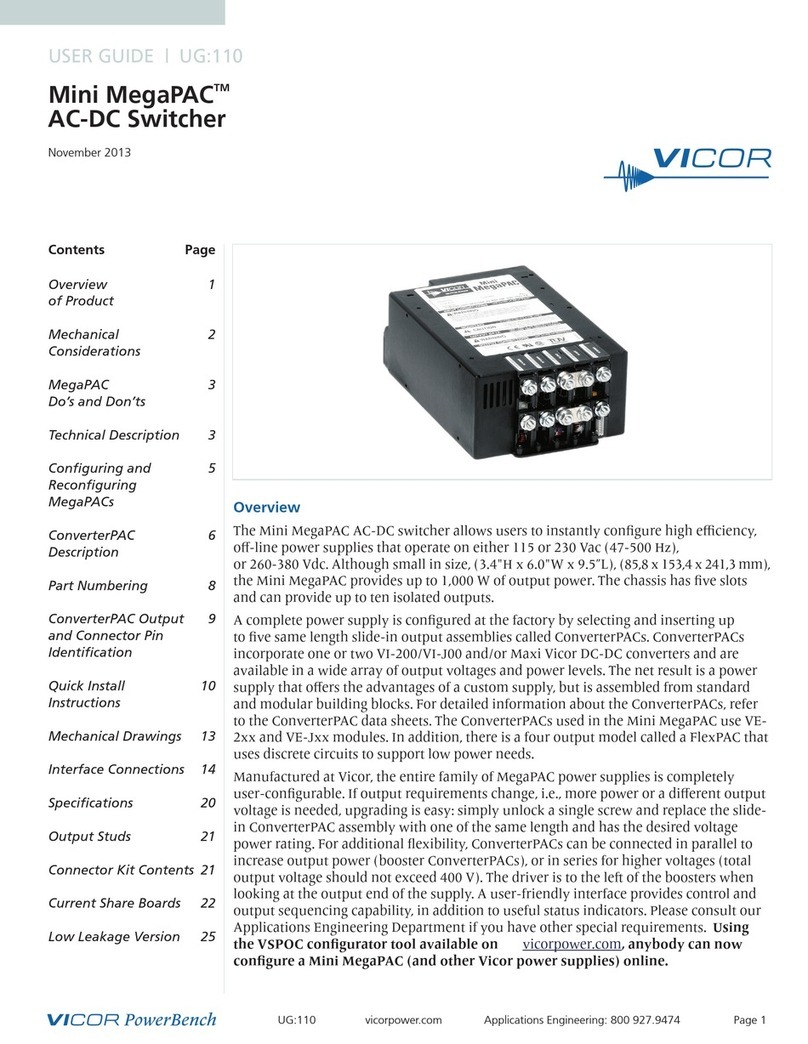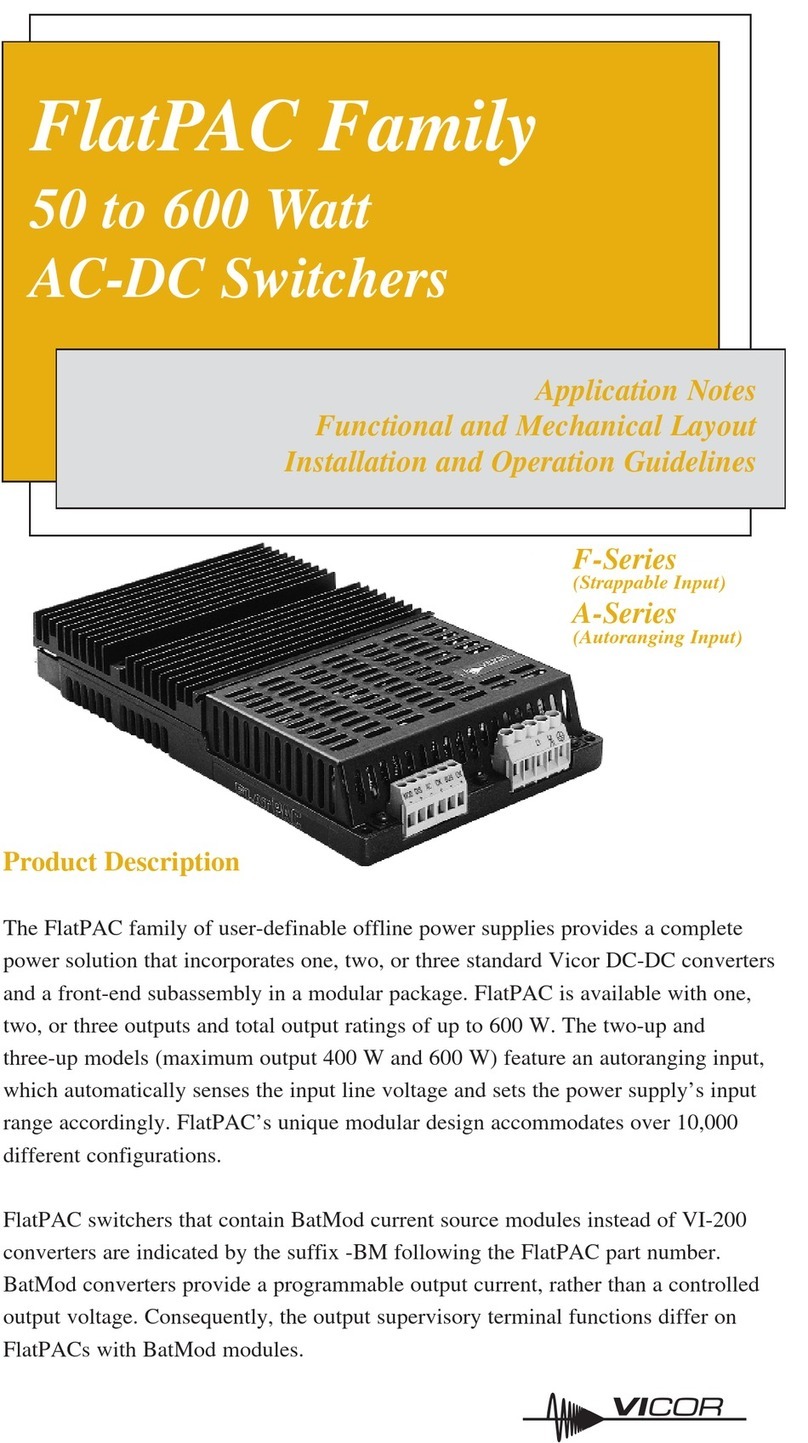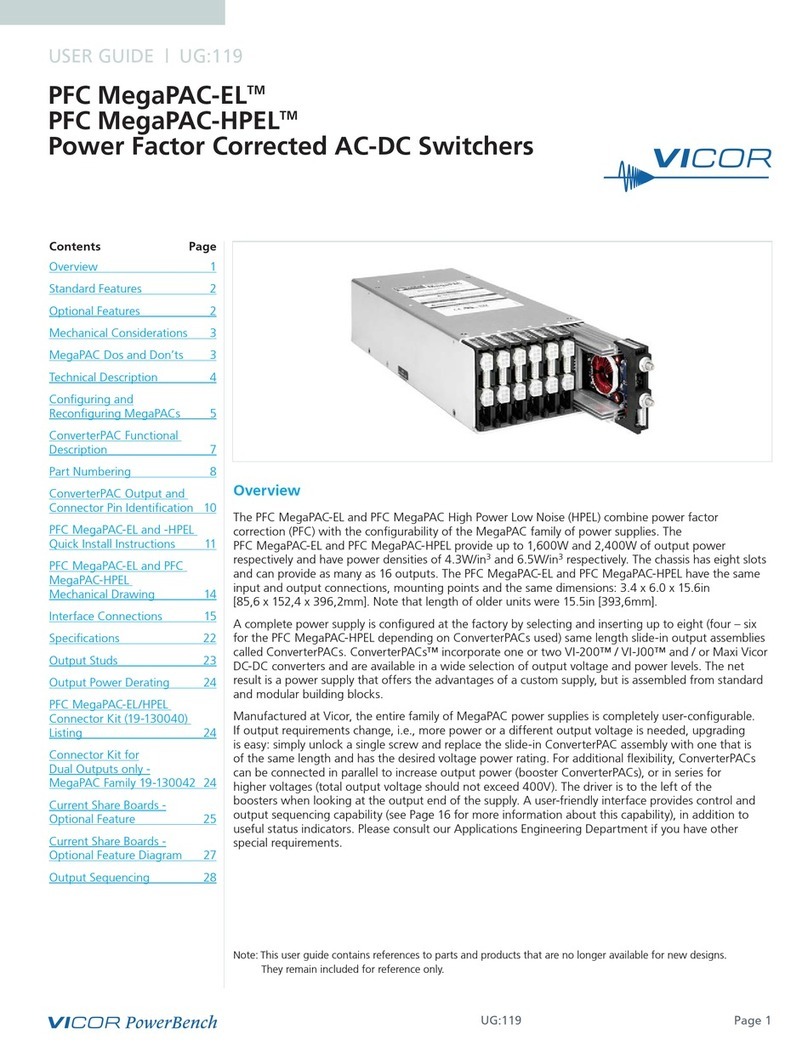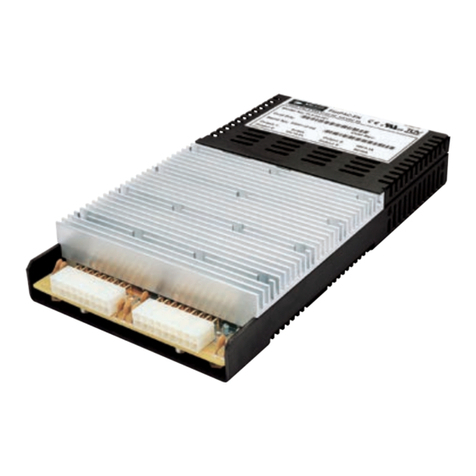
UG:107 Page 2
Standard Features
Input: 3-phase 208 / 240VAC Wye or Delta, 1-phase 180 – 264 (47 – 500Hz) or 260 – 352VDC
Power Output: 3-Phase MegaPAC™: 2,000W with 3-phase input;
1,200W with 1-phase input; 1 – 20 outputs
4kW MegaPAC™: 4,000W with 3-phase input;
1,500W with 1-phase input; 1 – 20 outputs
Ten slots (up to 20 outputs)
Fan cooled (the 4kW MegaPAC has two fans)
Full-power to 45°C; half power to 65°C
Power factor correction (passive) 0.92PF (3-phase input)
Conducted EMI meets EN 55022 Level A
AC Power OK and AC Power Fail status signals
Output Sequencing and General Shut Down
(Consult Applications Engineering for automatic sequencing circuitry)
Autosense (Refer to pages 13 and 17 for more information on Autosense)
Overcurrent protection on all outputs
Overtemperature limiting (not applicable with VI-J00™ modules)
Output overvoltage protection (not applicable with VI-J00 modules)
Ride-through time: >20ms at nominal line (full load)
Size: 4kW MegaPAC: 4.9 x 7.5 x 14in [124,5 x 190,5 x 355,6mm] Regular chassis
Size: 3-Phase MegaPAC: 4.9 x 7.5 x 12.3in [124,5 x 190,5 x 312,4mm] Regular chassis
Safety Agency Approvals: CE Mark, UL, CSA, TÜV
Optional Features
DC OK status signal
Output voltage adjustment range with built-in potentiometer
Reversed fan air-flow direction
Industrial-grade screening of output converters
Current Share Boards (see pages 26 – 28)
Mechanical Considerations
The 3-Phase MegaPAC and 4kW MegaPAC can be mounted on any of four surfaces using standard
8-32 or 4mm screws. The chassis comes with four mounting points on each surface; maximum
allowable torque is 20lb.in. The maximum penetration is 0.15in [3,8mm].
When selecting a mounting location and orientation, the unit should be positioned so air flow is not
restricted. Maintain a two inch minimum clearance at both ends of the 3-Phase MegaPAC and 4kW
MegaPAC and route all cables so air flow is not obstructed. The standard unit draws air in at the
fan side / AC input side and exhausts air out the load side. If air-flow ducting is used, use caution, as
sharp turns could present back pressure to the 3-Phase MegaPAC and 4kW MegaPAC. The fans move
approximately 50CFM of air for the 4kW MegaPAC and 30CFM for the 3-Phase MegaPAC. The 4kW
MegaPAC has a second fan for additional cooling capabilities.
Avoid excessive bending of output power cables after they are connected to the 4kW MegaPAC or
3-Phase MegaPAC. For high-current outputs, use cable ties to support heavy cables in order to minimize
mechanical stress on output studs. Be careful not to short-out to neighboring output studs. The
3-Phase MegaPAC and 4kW MegaPAC is supplied with serrated, flanged hex-nuts on all output studs,
so thread-locking compounds or lock washers are not required. The maximum torque recommended
on flanged nuts is 45lb.in. Never loosen the inner nut on a ConverterPAC™. This nut supports the
hardware inside the ConverterPAC and is factory torqued.
Avoid applications in which the unit is exposed to excessive shock or vibration levels. In such
applications, a shock-absorption mounting design is required.
